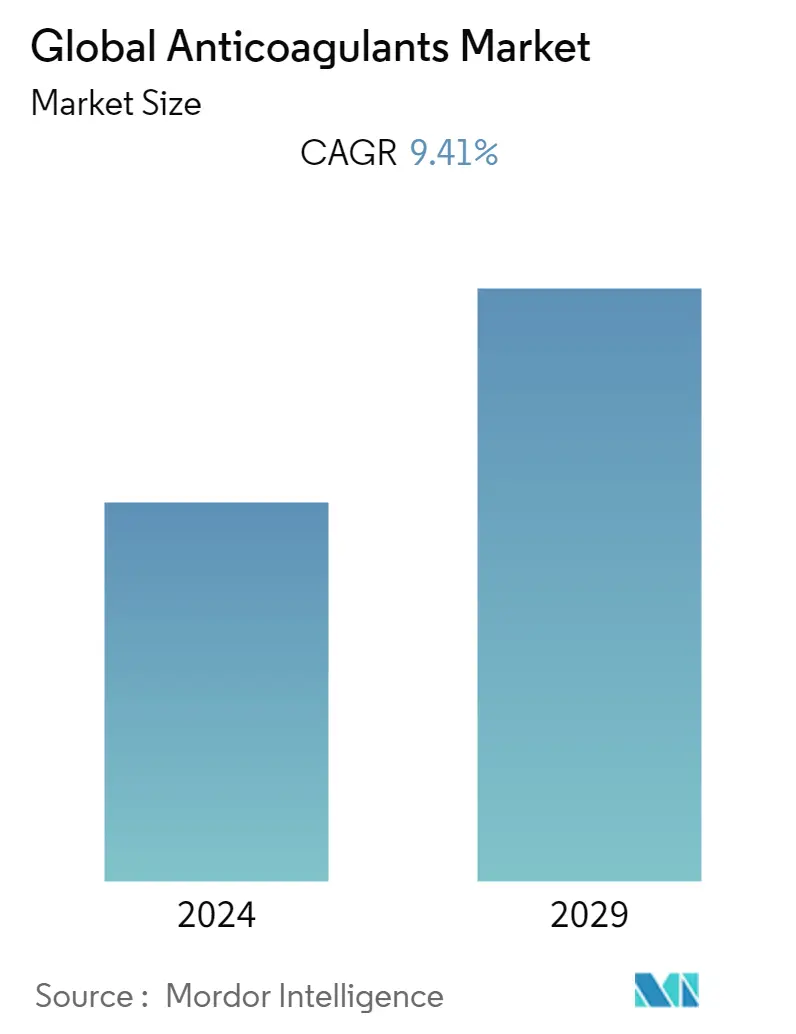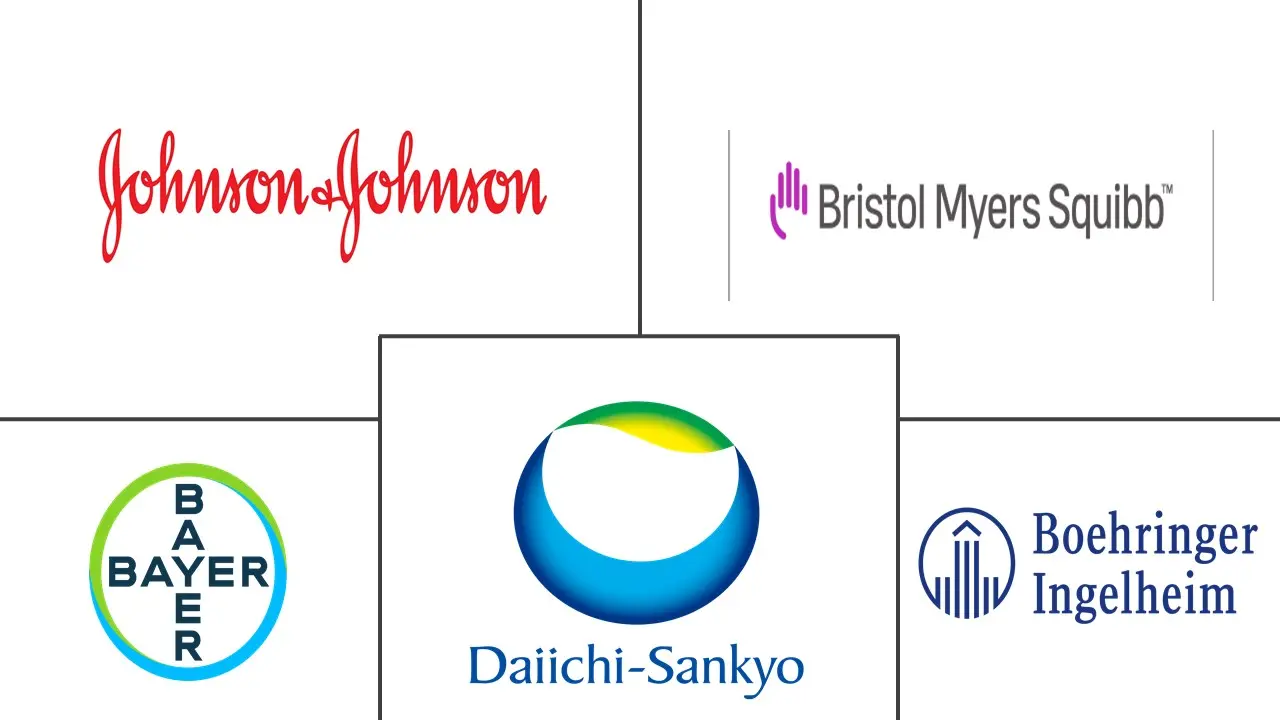Market Size of Global Anticoagulants Industry

| Study Period | 2019 - 2029 |
| Base Year For Estimation | 2023 |
| Forecast Data Period | 2024 - 2029 |
| CAGR | 9.41 % |
| Fastest Growing Market | Asia Pacific |
| Largest Market | North America |
Major Players
*Disclaimer: Major Players sorted in no particular order |
Need a report that reflects how COVID-19 has impacted this market and its growth?
Anticoagulants Market Analysis
The Anticoagulants Market is expected to register a CAGR of 9.41% during the forecast period (2022-2027).
COVID-19 infection is expected to have a substantial impact on the anticoagulant industry due to the quick pace of research. More than ten clinical trials are currently underway to assess the potential of anticoagulants in COVID-19 patients, according to a study published in the American Journal of Cardiovascular Drugs in 2020, and research on parenteral administration strategies for these drugs is being conducted for use in critically ill COVID-19 patients. As a result, the COVID-19 pandemic is expected to have both direct and indirect implications for the market in question. Furthermore, according to World Health Organization Update in January 2021, patients with COVID-19, both confirmed and suspected, should have access to follow-up care with low-dose anticoagulants, according to the World Health Organization. Thus, the demand for anticoagulants increased during COVID-19.
This is attributed to an increase in the incidence of chronic diseases and technological advances in the development of anticoagulant products. Anticoagulants are used to treat and prevent blood clots which can block blood vessels (an artery or a vein) that can lead to serious complications as the clot disrupts the flow of blood to important organs and can result in heart attack and stroke. According to the World Health Organization June 2021, an estimated 17.9 million people die due to cardiovascular diseases worldwide, each year. This represents 35% of global deaths. Additionally, 85% of these cardiovascular disease deaths are due to heart attack and stroke. In addition, according to the article published in Cureus Journal of Medical Science in July 2020, ischemic heart disease (IHD) is a leading cause of death worldwide. Ischemic heart disease affects around 126 million individuals (1,655 per 100,000) globally, which is approximately 1.72% of the world's population. The global prevalence of ischemic heart disease is expected to exceed 1,845 per 100,000 by the year 2030. Furthermore, increasing cases of chronic diseases, unhealthy lifestyles adopted by individuals, and growing adoption of novel oral anticoagulants (NOACs) are the key driving factors in the anticoagulants market.
Moreover, technological advancements in the development of anticoagulant products and approvals are also propelling the growth of the market. For Instance, In June 2021, the United States Food and Drug Administration approved Boehringer Ingelheim's dabigatran etexilate (Pradaxa) anticoagulant oral pellets as the first oral anticoagulant to treat children aged 3 months to less than 12 years old with venous thromboembolism after they have received at least five days of treatment with a blood thinner given by injection.
Thus, all the aforementioned factor is expected to drive the growth of the anticoagulant market over the forecast period. However, stringent regulation and side effects associated with the treatment restrain the market growth over the forecast period.
